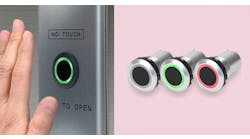Presence sensing is a broad topic that entails both object detection and machine guarding. Choosing the right device always entails some forethought, especially when installing it in difficult-to-reach or hazardous areas. Our panel of experts tells you what you need to know.
How are effectiveness and safety ensured in wireless presence-sensing applications that involve machine guarding?
The most common wireless safety products are control pendants, emergency-stop devices and enabling switches. When the devices are actuated or an error occurs due to loss of connection, corruption of data stream or failure of heartbeat, for example, a stop is initiated and the machine goes into a safe state. These wireless safety systems must have a highly reliable wireless link, which includes redundant transmission channels, error correction and measures to avoid interference from other devices. They often utilize a dedicated, proprietary two-way protocol, and there is redundancy in hardware and software to constantly monitor the health of the wireless link. Suppliers have also implemented countermeasures to address battery life, range and security.
Because of these reasons, I’m going to default to my “simply easy” approach to complex stuff. This means I’m going to believe in and trust the machine-safety certifications, which are globally available. When I follow this approach and only purchase wireless components that have the appropriate certifications and stamps on the sensors, I’m going to believe they have been thoroughly tested and meet all safety requirements for safety, reliability, redundancy, self-check and accuracy.
Here are some key points to remember.
Occupational Safety and Health Administration (OSHA) is mandatory and legally binding in the United States. OSHA has incorporated the American National Standards Institute (ANSI) and National Fire Protection Association (NFPA) into its standards. OSHA recommends robots comply with ANSI/RIA R15.06.
European TUV certification is designed to ensure manufacture’s build products and components correctly, while in the United States, OSHA and NFPA regulations tend to focus on the safety of the workplace environment.
For your wireless safety sensor look for UL, TUV, performance level (PL), category (Cat.) and safety integrity level (SIL) stamps on the product.






